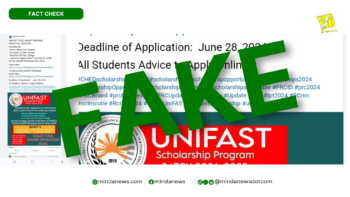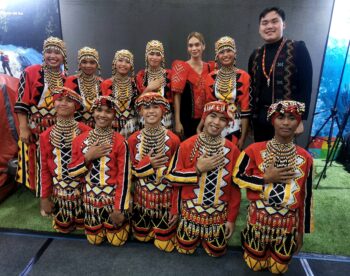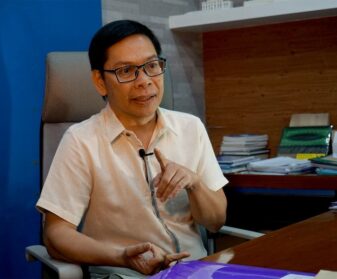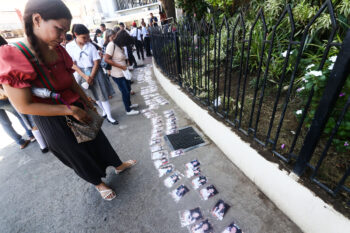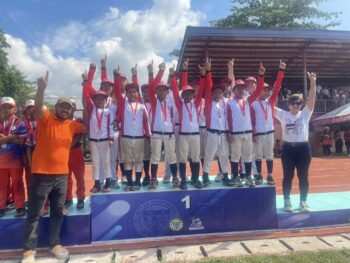Book Launching Speech (July 8, 2011)
Troubled Odyssey was my odyssey. When I outlined it in October 2009, I said I would finish it by June 2010. I finished it in June 2011. My original plan was to write mainly about the GRP-MILF peace negotiation. I would use a bit of Moro history and the MNLF phase of the rebellion as backgrounders. The comments I had written on the Government-MILF negotiation, I figured out, would make the writing of the book easy.
But as I wrote Part II, I realized that the Bangsamoro pursuit of their right to self-determination started after they had lost to the Americans the political independence they had defended against Spain.
The odyssey is that of the entire Bangsamoro nation, not just of the MILF.
The revision called for more materials and longer time to write. To lengthen more the time, I had to interrupt my work, at times for weeks, to comment on emerging issues.
Yet, it was a blessing. This clearer and more comprehensive picture of the Moro problem I came to realize.
The complaints and demands of the militant Moro leaders of the 1960s were essentially the same as those in the 1921 Sulu petition, 1924 Zamboanga declaration, 1934 Dansalan petition and 1935 Dansalan declaration of Moro militant leaders.
The Filipinization policy and program that Manila led by Manuel L. Quezon designed to assimilate the Moros after the abolition of the Moro Province in 1915 divided Moro leaders; it has essentially been carried out until today under different names and strategies to continue dividing Moro leaders.
The Americans abandoned their early plan to govern the Moros in a separate territory. They ignored the Moro petitions and obviously took the warning of troubles in the future as mere bluffs. They knew the enmity between the Moros and the Christian Filipinos. Had the Moro petitions been properly addressed, perhaps the outbreak of the Moro rebellion in 1973 could not have happened.
Mindanao and Sulu were considered colonies at the dawn of the Philippine Republic. This was evident during the Malolos Constitutional Convention when Christians – not Moros – represented Mindanao and Sulu. This mindset succeeding Manila leaders have maintained down to the present day; it has prevailed in the Malolos, 1935, 1972 and 1987 Constitutions, in policies for Mindanao and the Muslims and in land laws. This defined and set the tone of Moro disenchantment and dissent against the Government of the Philippines.
Moro leaders have only two options – eternal dependence on Manila or autonomy. If they choose the first, they need not unite but only outdo each other in seeking patronage from Manila. If they prefer autonomy, they must know what autonomy will solve the Bangsamoro problem – whether it is autonomy that Manila wants or autonomy that fulfills their right to self-determination. If the first, they only have to accept the autonomy Manila caters or would concede according to the present Constitution and laws. If the second, they have to unite.
In unity, they must have a clear vision of that autonomy; lay down clearly the principles; formulate the structure and the modalities of that autonomy and its government; then, negotiate to convince Manila and the Filipino majority that only that autonomy can solve the Bangsamoro problem. If the Moro leaders remain disunited as they are now, they will never attain that autonomy.
Credit the Organization of Islamic Conference for having convinced the MNLF to settle for autonomy within the realm of the national sovereignty and territorial integrity of the Philippines. Credit the OIC for mediating in the series of GRP-MNLF peace negotiations that ended in the signing of the 1996 Final Peace Agreement. However, after the plebiscite on RA 9054 and the election in the ARMM in 2001, the OIC should have bowed out.
But when the MNLF had differences with Manila concerning the FPA and RA 9054, they ran crying to the OIC instead of resolving the problem according to the provisions of the two instruments. Then the OIC started again nagging Manila with its yearly ICFM resolutions like before. Will continuously babying the MNLF and nagging Manila help Muslim autonomy stand on its own feet? How long will the OIC be welcomed to continue meddling in Philippine domestic affairs?
The first year of the Aquino III government has revealed, first, a tendency to indulge in rationalization, equivocation and media hyping like the Arroyo government; and, second, a policy direction: It has pledged to avoid the mistakes of the Arroyo government; to sign an agreement acceptable to all – to the Supreme Court, the Congress and all stakeholders; and, to grant the MILF only what the government can give.
Pursuant to this policy, the government peace panel has done – and must still be doing — extensive consultations to determine what the stakeholders want to include in the government draft peace proposal. This must explain the repeated requests of the Government for more time to prepare its draft peace proposal.
By this policy, the government has revised the MILF original talking point from “How to solve the Bangsamoro Problem” to “How to solve the stakeholders’ problems about the Bangsamoro Problem”.
Many will disagree with me. I’m not going to debate with anybody. Let’s just examine past and present events – many of them I have discussed in Troubled Odyssey – and the still unfolding events in order to see the comprehensive picture of the Bangsamoro Problem and do what we can to help solve it. (Troubled Odyssey, another book on the Bangsamoro Problem by Patricio P. Diaz, was launched on July 8, 2011 in Davao City together with two other books on Mindanao published by MindaNews)

